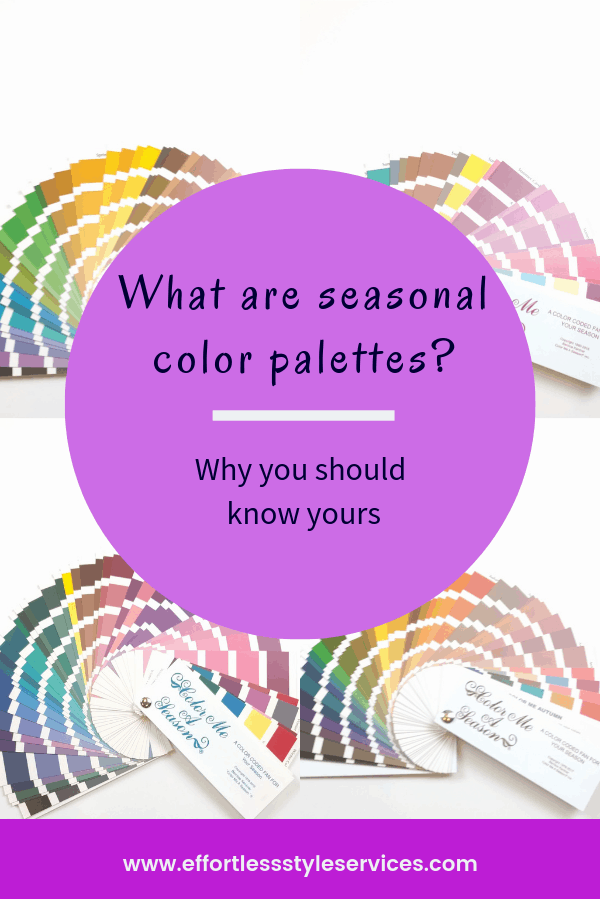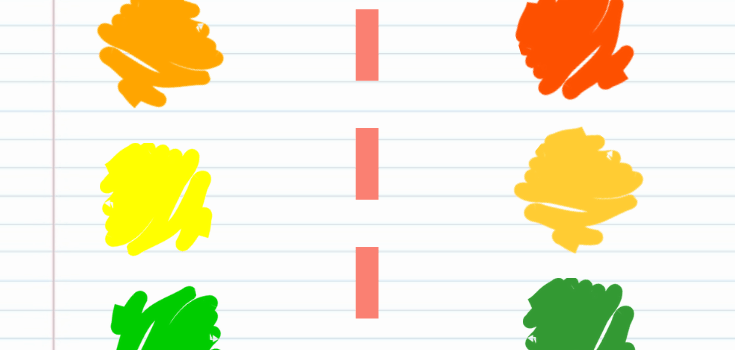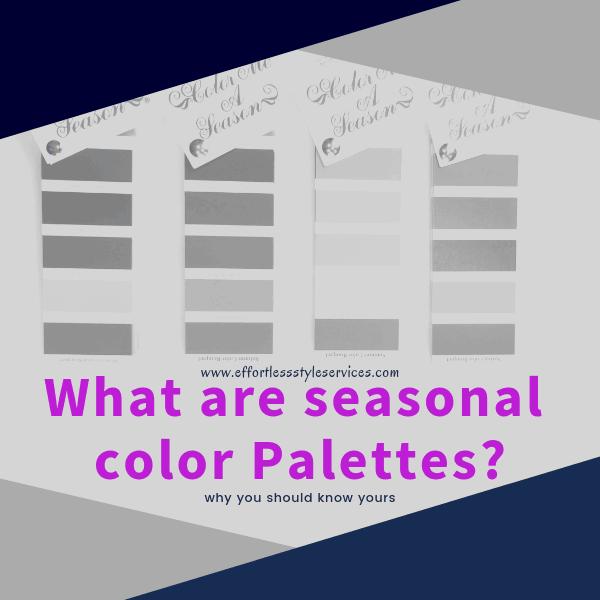
First of all, I have read a lot in the past few years about color palettes for your wardrobe and seasonal color analysis. In fact, I read everything I could get my hands on. There are many different takes on seasonal color theory and creating a wardrobe color palette from your body’s natural colors, but the theory that makes the most sense to me and has the most science behind it is Color Me A Season: A Complete Guide to Finding Your Best Colors and How to Use Them by Bernice Kentner. If you want more information than what I’m giving you, I believe her book is the best place to start.
Seasonal color theory, in some form, has been around for a long time but reached its popularity in the US during the 1980’s.
The basis behind the theory is that every person on earth falls into one of four categories based on the natural colors found on their body. Specifically, the four categories were named like the seasons: Spring, Summer, Autumn, and Winter.
Seasons Explained
Now, forget for a moment the actual temperature of the weather during the seasons and look at them from a color standpoint only. Winter and Summer are considered to be “cool” seasons while Spring and Autumn are considered to be the “warm” seasons. The cool season colors are derived from the standard color wheel. The enriched or double primary color wheel produces the warm colors.
As an example, here is an oversimplification of how the seasons’ color wheels were created:
Summer
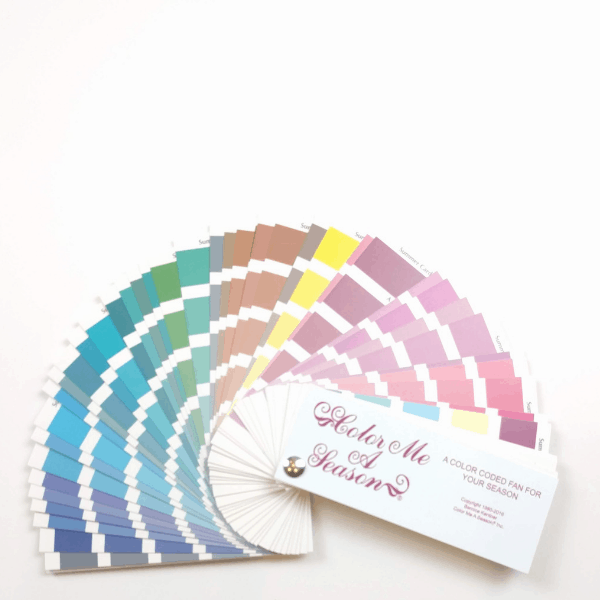
Winter
Summer’s colors are tints of the standard color wheel. If you remember from an earlier post, tints are created by adding white to them. These colors are often referred to as pastels. They are light and airy. Follow my Summer section of my Color board on Pinterest for additional information.
Winter’s colors are also from the standard color wheel and include shades created by adding black. These colors have a high value and are sometimes referred to as being “deep”. Winter also has some icy pastels that are created by adding just a little white, but not as much white as a summer. Because colors exist on a spectrum, not all colors are easily classified as one or the other, they may toe the line and either season may look good wearing them. This season’s colors have a sort of serious/ sophisticated feel to them. Visit the Winter section of my color Pinterest board here.
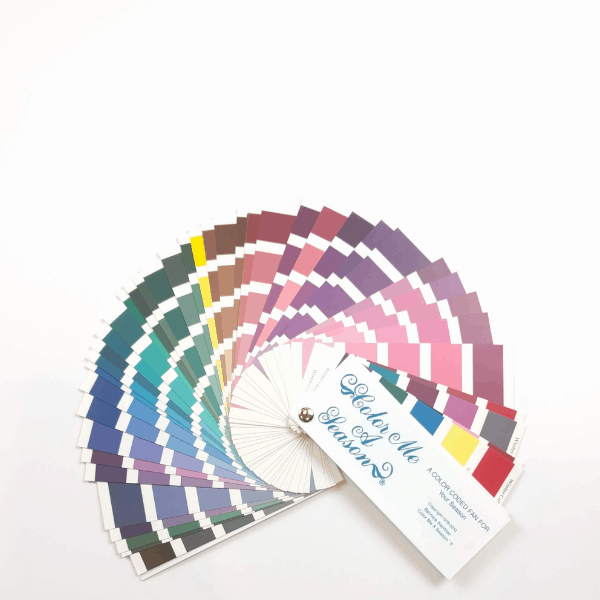
Side note: I say “may look good” because even within seasonal color analysis there are not absolutes. Each one of us is still unique. There may be some colors in your palette that don’t look as good on you as others. We’ll talk more about why this is when we talk about seasonal blends.
Spring
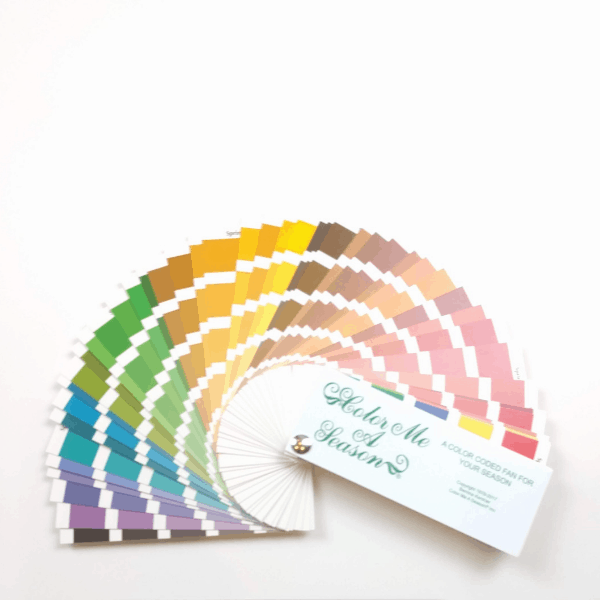
Autumn
Spring’s colors are the full intensity colors of the Enriched color wheel. The colors are bright and cheerful. My Spring section of my color board on Pinterest has some interesting finds about your season.
last, but not least, Autumn’s colors are created from the Enriched color wheel. For most of the colors, a little bit of its complement is added to lower the saturation of the color. This is sometimes referred to as being muted, though the definition of “muted” and how a “muted” color is achieved is disagreed upon by many in both the fashion and art communities whether it is done by adding the complement, gray or both. The colors have a very earthy feel. For example color palettes and other neat tidbits for your Autumn, visit the Autumn section of my color board. You’ll also find a dedicated page for each season here at Effortless Style Services: Spring, Summer, Autumn, Winter.
Finally, if you’re still not sure of your season, be sure to get on the waitlist for my FREE Color Course or if you live near the 73533, get a personal seasonal color analysis.
Buy a seasonal color fan to take shopping with you, so you’ll never leave the store with the wrong colors again.
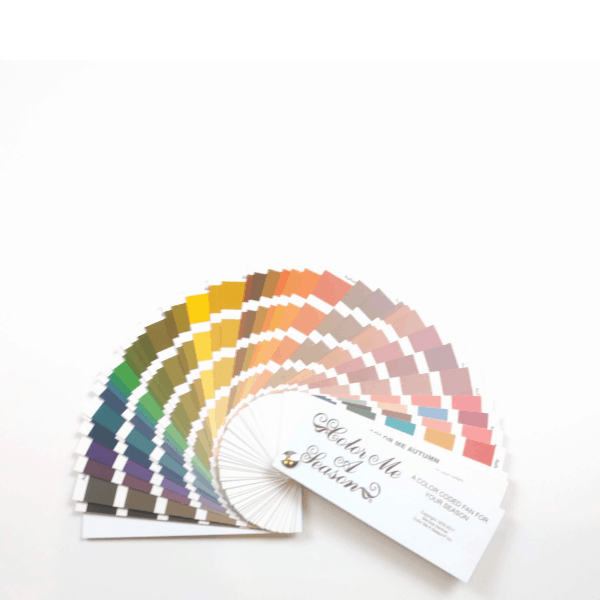
*disclaimer: Colors may appear differently on your monitor. Only 216 web safe colors exist, therefore, the display diminished some of the nuances of the colors. Take a peek into your own closet. Which season’s colors do you have the most of?
